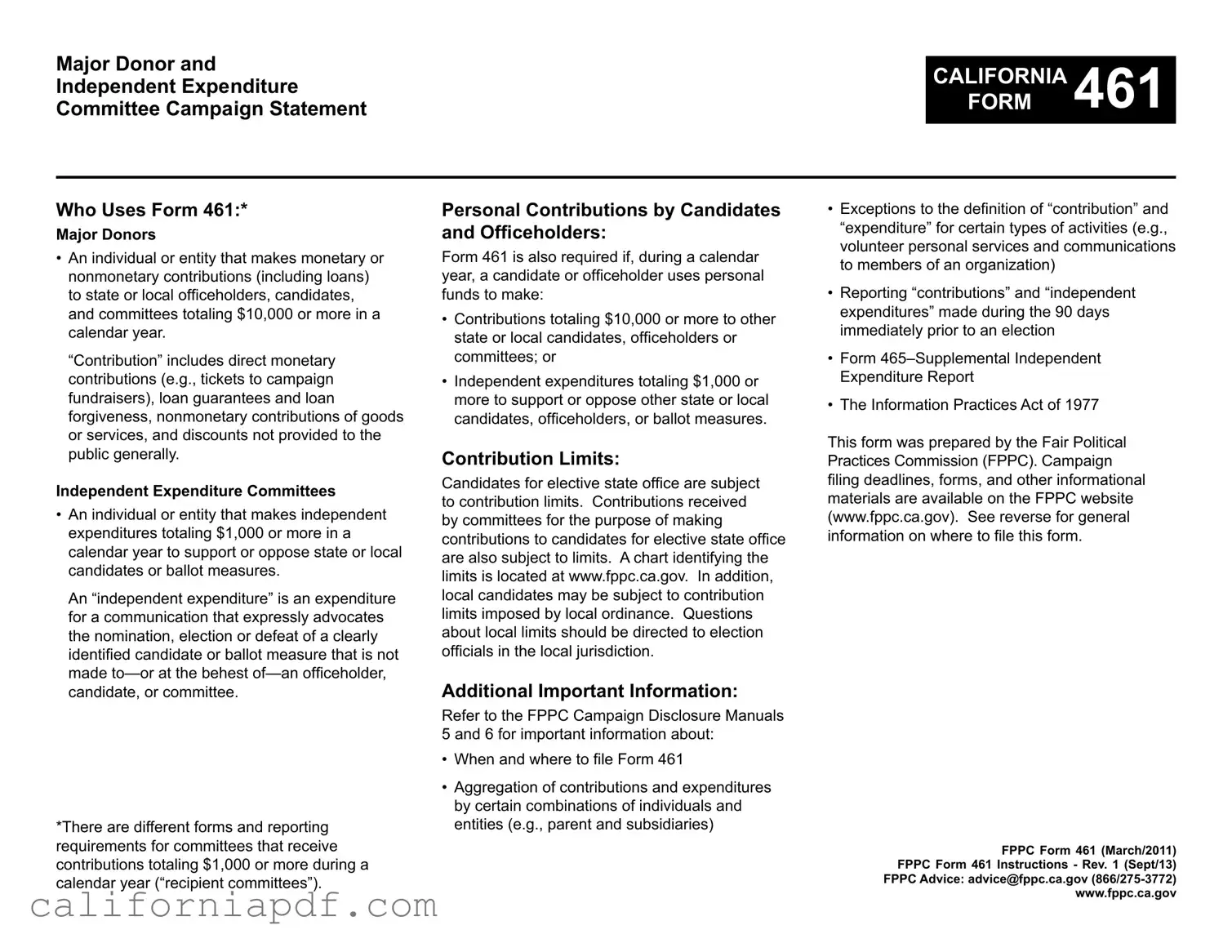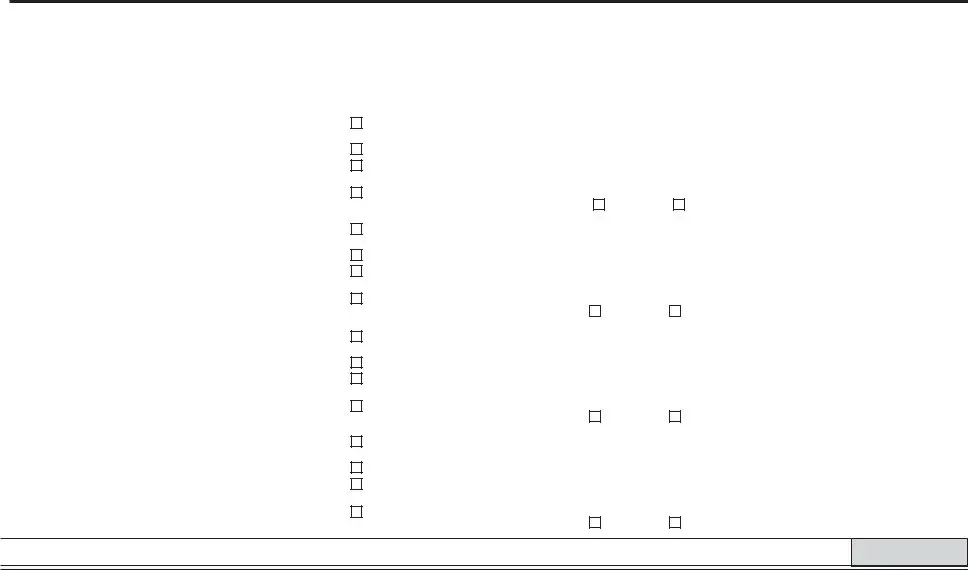The California Form 460, "Recipient Committee Campaign Statement," closely resembles the Form 461 in purpose and design by documenting contributions and expenditures related to political campaigns. Both forms require detailed recording of financial activities to ensure transparency and compliance with state campaign finance laws. Form 460, however, is specifically for recipient committees that have received or spent $2,000 or more during a calendar year, highlighting its focus on ongoing campaign operations rather than major donors and independent expenditures exclusively.
The Schedule A of Form 460, detailing contributions received, mirrors part of Form 461’s content where major donors list their contributions. Both schedules serve to track the flow of money towards political campaigns, but Schedule A focuses on a wider range of contributions received by a committee, regardless of the donor's total annual contribution amount. This schedule is critical for maintaining the transparency and legality of campaign financing by recording each contribution's source, amount, and date.
The Form 497, "24-Hour Contribution Report," is akin to Form 461 as it also deals with political contributions, yet it is used under more urgent circumstances. Form 497 is required when contributions of $1,000 or more are made or received during specific periods close to an election. Similar to Form 461, it ensures transparency in campaign finance but acts on a more immediate basis, reflecting the dynamic nature of political campaigning.
The Form 450, "Recipient Committee Short Form," shares a similar goal with Form 461 by aiming to report campaign finance activities. However, Form 450 is for committees that anticipate they will not receive or spend $2,000 or more in a calendar year, offering a simplified reporting option. While both forms contribute to the oversight of political finance, Form 450 applies to smaller scale operations, emphasizing the broad spectrum of financial activities involved in political campaigning.
Form 465, "Supplemental Independent Expenditure Report," is directly related to Form 461 given that both handle independent expenditures. While Form 461 encompasses a broader range of reporting for major donors and independent expenditure committees, Form 465 specifically targets supplemental reporting of independent expenditures not already reported on the campaign statement. This specialization allows for more detailed scrutiny of expenditures aimed at influencing elections without coordinating with candidates or committees.Untitled Placemark-122.41941550000001,37.7749295,0
Form 501, "Candidate Intention Statement," although primarily a preliminary document for candidates declaring their intent to run for office, indirectly complements Form 461 by setting the stage for future financial reporting and compliance with campaign finance regulations. The early declaration required by Form 501 allows for a smooth transition into more detailed financial reporting, such as that required by Form 461, by establishing a candidate’s official entry into the electoral process.
Form 700, "Statement of Economic Interests," while not exclusively a campaign finance document, shares with Form 461 the goal of promoting transparency and preventing conflicts of interest within public offices. It requires detailed disclosures about a public official’s financial interests, similar to how Form 461 requires disclosures about financial contributions and expenditures in campaigns. Both forms function to ensure public trust in the electoral and governing processes by highlighting possible financial influences.
Form 410, "Statement of Organization Recipient Committee," serves as a foundational document that parallels Form 461 in the broader context of campaign finance reporting. By registering a political committee and detailing its purpose, Form 410 initiates the transparency and accountability process, which Form 461 continues through its detailed financial reporting requirements. Together, these forms create a comprehensive view of the financial dynamics within political campaigns.






